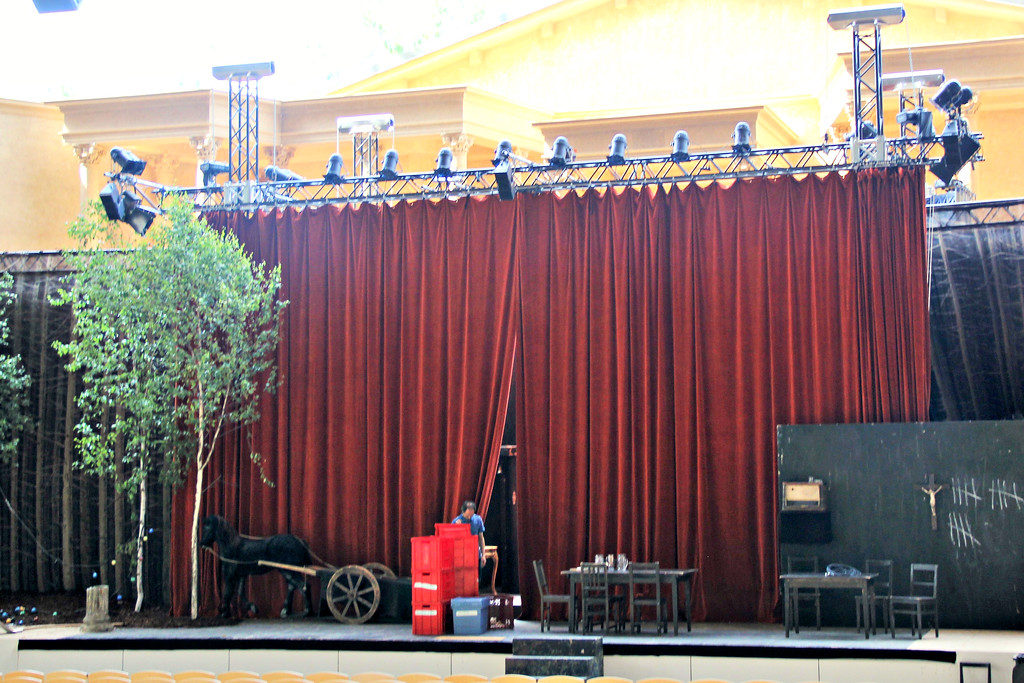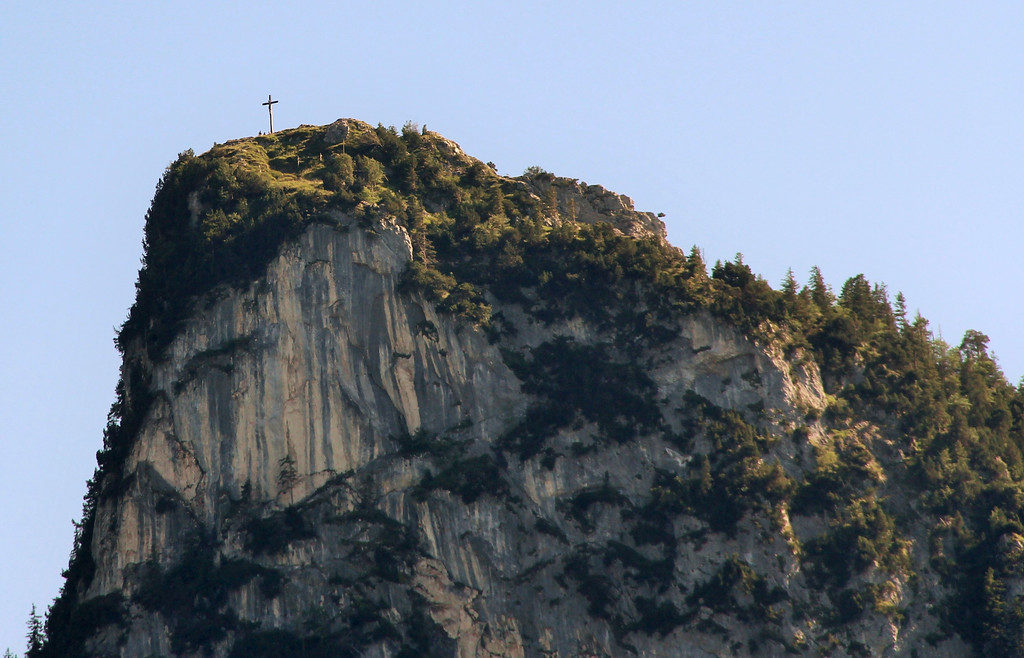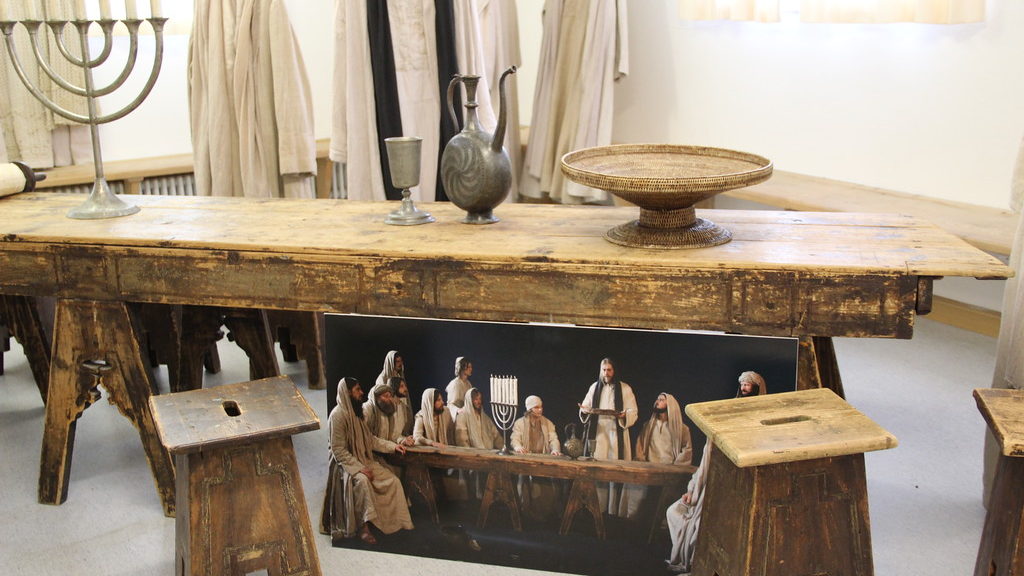
Oberammergau and the Passion Play
We drove from Munich to Oberammergau. Along the way, we saw houses with beautiful paintings on them. The technique used is like that of a fresco where paint in applied to wet plaster. As the plaster and paint dries, the paint becomes permanent (can’t be dissolved by water). Paintings like these are referred to as Luftlmalerei. They became popular in the 18th Century and were used to convey one’s wealth. Many of the houses around Oberammergau have paintings related to the Christ’s crucifixion and the Easter story although there were secular ones as well.
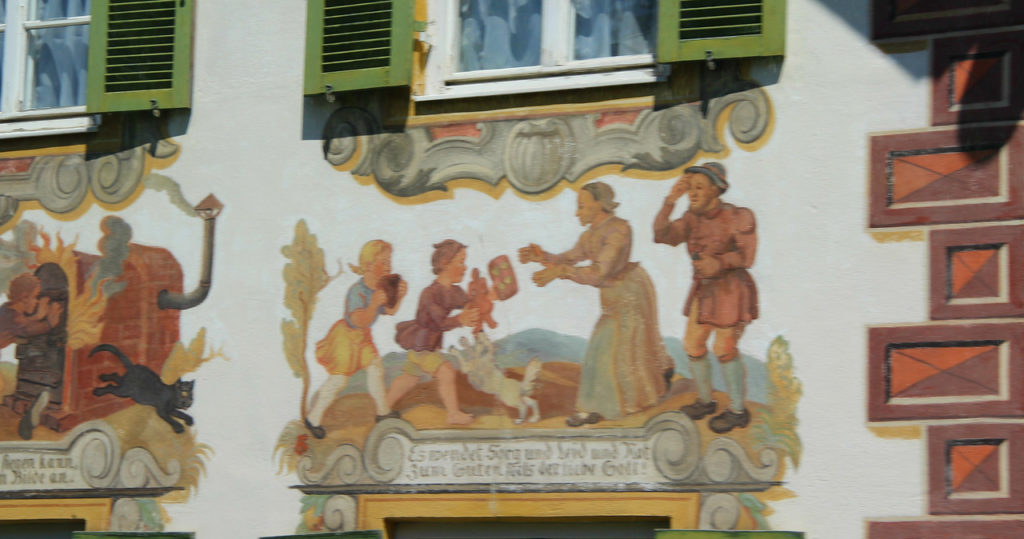
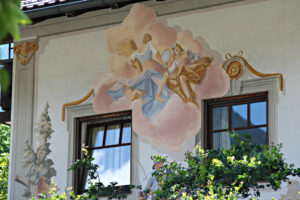
The first picture below is the outside of the theatre where the Passion Play (Passionsspiele in German) is presented every ten years. Its history dates back to the 1600’s when the Bubonic Plague ravished much of Europe. In Oberammergau, 80 people lost their lives to the plague. The people of Oberammergau pledged to perform a passion play every ten years if God would save them from the plague. After this promise was made, supposedly no one else was afflicted with the plague and those already suffering from it recovered.
The people of Oberammergau kept (and continue to keep) their promise. The very first Passion Play was performed in 1634 and has been performed (with just a few exceptions and postponements) every ten years since. It was moved to the beginning of each decade in 1680. The script was updated in 1750 (possibly other times earlier as well) to include “observations.” They consist of music and “living images” in which the actors/actresses are still. This is accompanied by narration depicting Old Testament prophecies that would be fulfilled in the New Testament. This technique of using “observations” is still used in the Passion Play today.
Known as the “right to play,” cast members must be born in Oberammergau or have lived in the town at least twenty years. They are not professional actors but have other occupations. According to the Passionsspiele website, in 2010 the performance began at 2:30 – there were five acts, followed by a three hour break, and then the play resumed at 8:00 with the last six acts. About 500,000 people are expected to attend 102 performances of the Passion Play in 2020.
When we visited, it was not a year when the Passion Play was being performed, but there is still much to see. We were able to tour the theatre. As you walk into the theatre, there are pictures displayed from past Passion Plays. I took pictures of some of these and you will find them below.
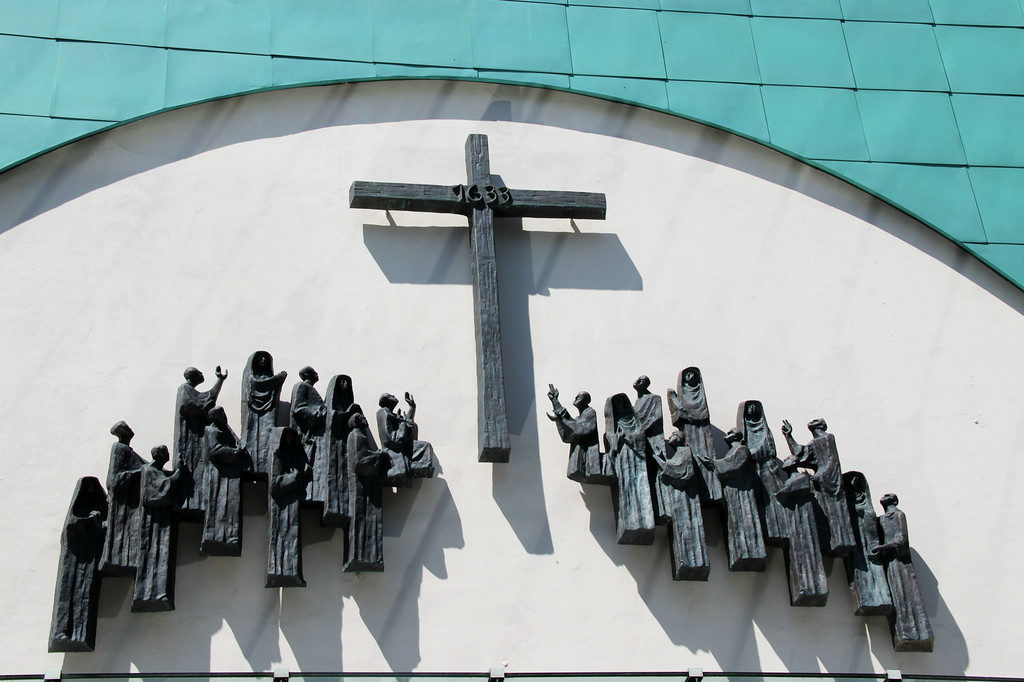

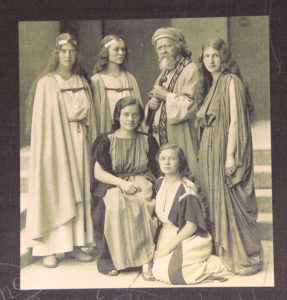
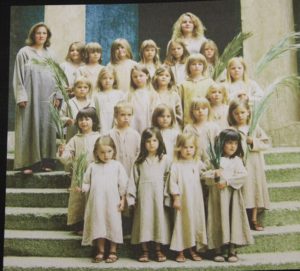

As I previously mentioned, our visit in 2015 was not a year when the Passion Play was performed. We were able to tour the theatre and saw several exhibits showcasing costumes and props used during the enactment of Christ’s crucifixion and resurrection. While costumes are frequently updated, many of the other “props” have a long history. The table in the third picture is used to portray the Last Supper. This table has been used in the Passion Play for the past two hundred years.
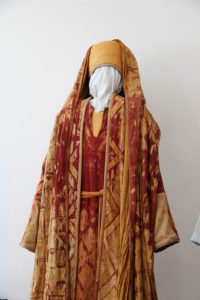
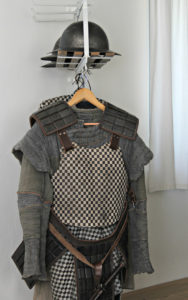
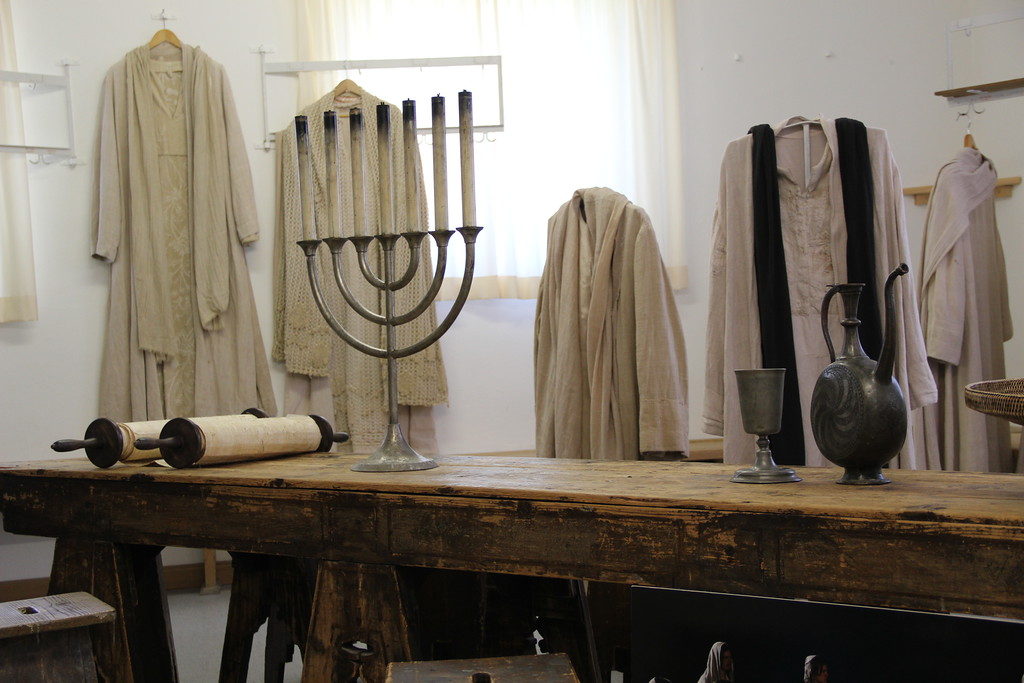

The first Passion Play was performed on a small wooden stage near the cemetery next to the parish church where many of the plague victims were buried. As word of the performance spread and more people came to the play, the community needed a larger venue. The stage was moved to the edge of town in 1830 and a fixed foundation was built. This remains the site of the current theatre. In 1890, the stage was renovated and some of the seating was covered to protect the audience from the elements. In 1900, a large auditorium was built with seating for 4,200 people. The auditorium is open to the front where there is an open-air stage. The stage was again renovated in 1900. The first picture below is of the stage. The next is taken from outside and behind the stage. It shows the mechanism used to quickly change sets. Over the years, presidents, kings, queens, prime ministers, popes, cardinals and celebrities have viewed the performance. After our tour of the theatre and some shopping time (you can find wonderful wood carvings here), we left Oberammergau. As we left we saw Kofel Mountain which has a cross at its peak.
Plans are underway for the 2020 Passion Play. Tauck has several tours that will include the opportunity to see the Passion Play, including the Alps and Dolomites tour. My husband and I plan to take one of the river cruises which will also include the Passion Play performance. I encourage you to check the Tauck website if you have interest in seeing Oberammergau’s Passion Play.
